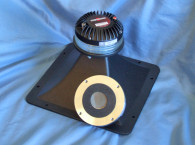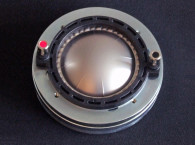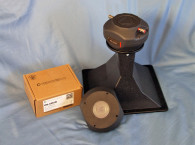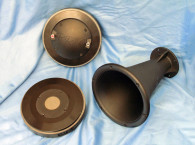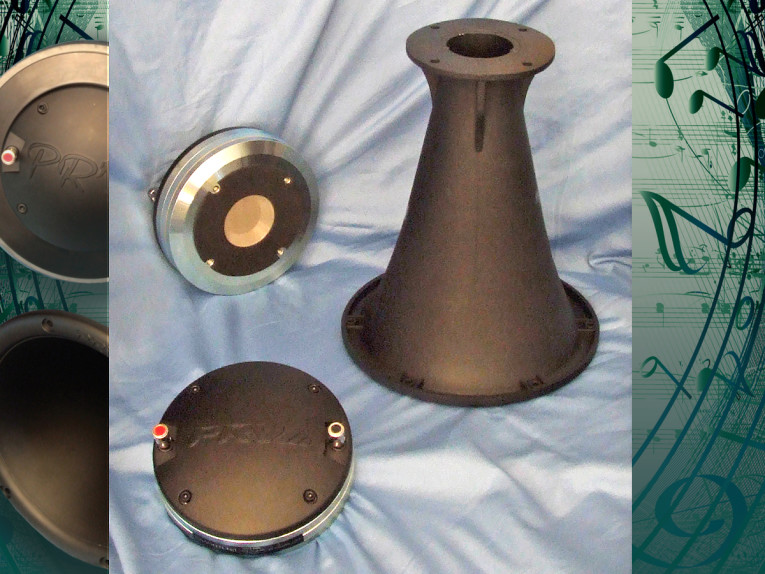
PRV Audio’s D4400Ti-Nd 2” throat neodymium motor and titanium diaphragm compression driver was measured coupled with the PRV WGP22-50 60° × 60° waveguide (see Photo 1). The D4400Ti-Nd is the latest in a series of 2” throat 4” diameter voice coil compression drivers, which includes the D4400Ti-ND, the D4400Ti, and the D4400Ph.
Features for the PRV Audio D4400Ti-ND include a titanium diaphragm driven by a 4” voice coil wound on a Kapton former with copper-clad aluminum wire (CCAW). Other features include a cast-aluminum body, a 200 W rated power handling (400 W program material maximum), a neodymium ring magnet motor, field replaceable diaphragm, 110 dB sensitivity, minimum crossover frequency of 1.6 kHz, and color coded push terminals. The horn supplied with the D4400Ti-ND compression driver is PRV’s WGP22-50 injection-molded ABS waveguide with a 1.4” throat. The WGP22-50 is a 60°H × 60°V round horn with a low-frequency limit of 800 Hz.
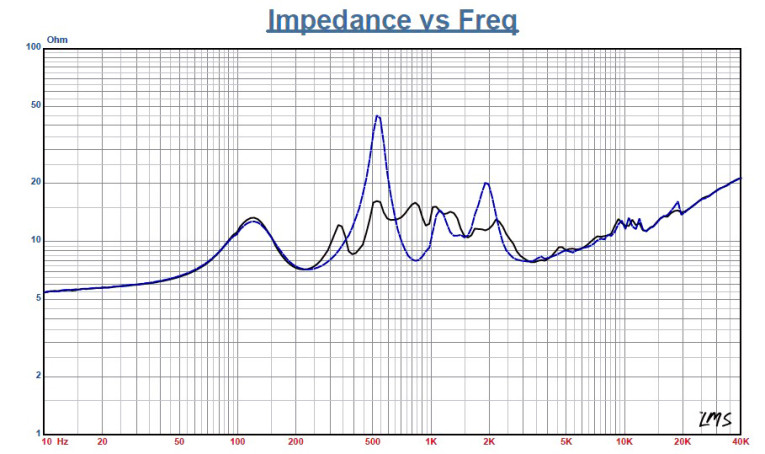
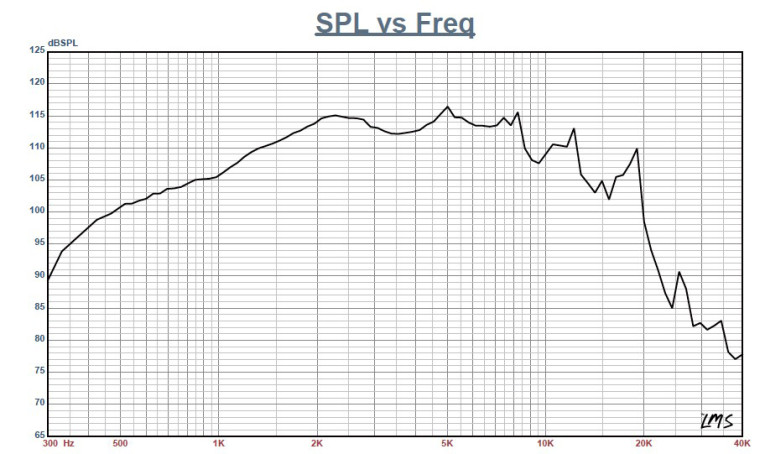

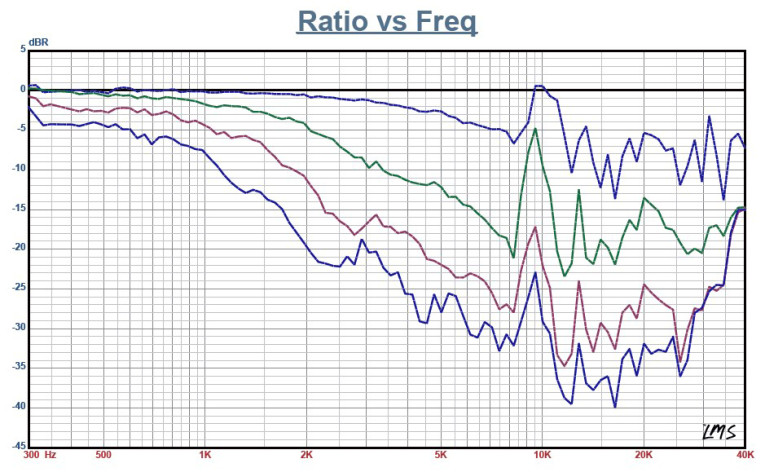
I used the LinearX LMS analyzer to create a 200- point stepped sine wave impedance plot shown in Figure 1. The solid black curve is with the D4400Ti-Nd mounted on the WGP22-50 horn and the dashed blue curve represents the compression driver without the horn. With a 5.93 Ω DCR, the minimum impedance of the D4400Ti-Nd/WGP22-50 was 7.18 Ω at 228 Hz.
For the next group of frequency response tests, I mounted the PRV Audio D4400Ti-Nd/WGP22-50 without an enclosure in free air then measured both the horizontal (no vertical measurements were made since the WGP22-50 is round horn) on and off axis at 2.83 V/1 m using a 100-point gated sine wave sweep.
Figure 2 shows the on-axis of the compression driver/horn combination for the D4400Ti-Nd. The response is approximately ±2.7 dB at 1.6 to 8.5 kHz, followed by the low-pass roll-off, with a response out to 20 kHz. Figure 3 shows the on- and off-axis horizontal plane response from 0° to 60°. Figure 4 shows the off-axis normalized to the on-axis response for the horizontal axis measurement.
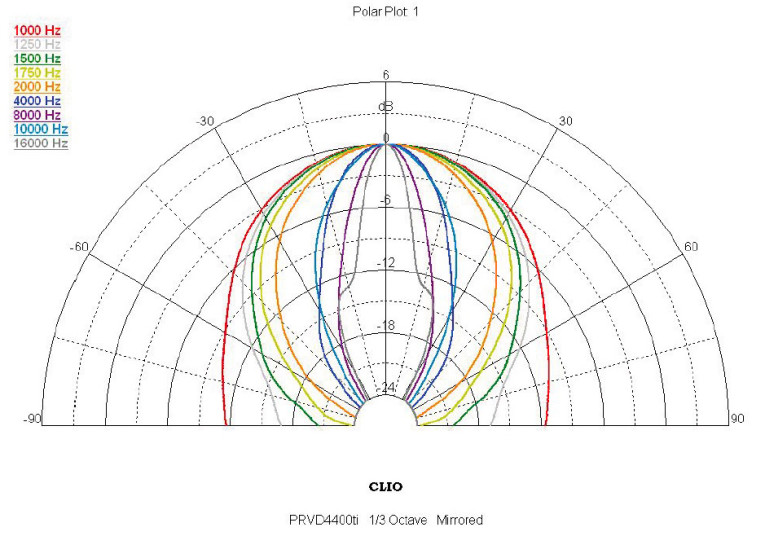
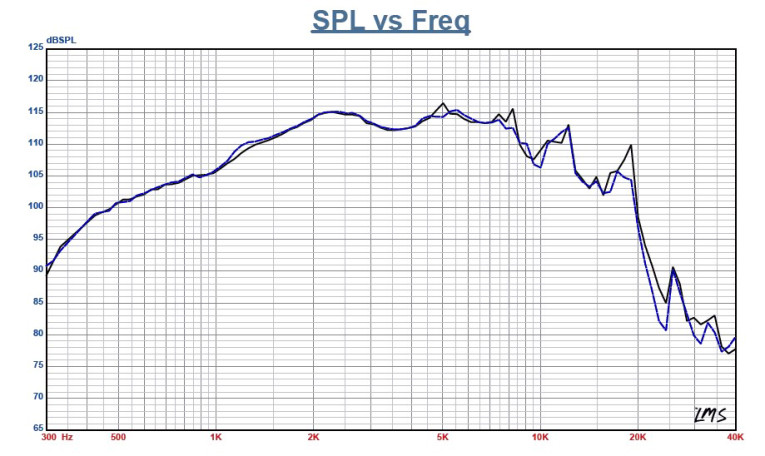
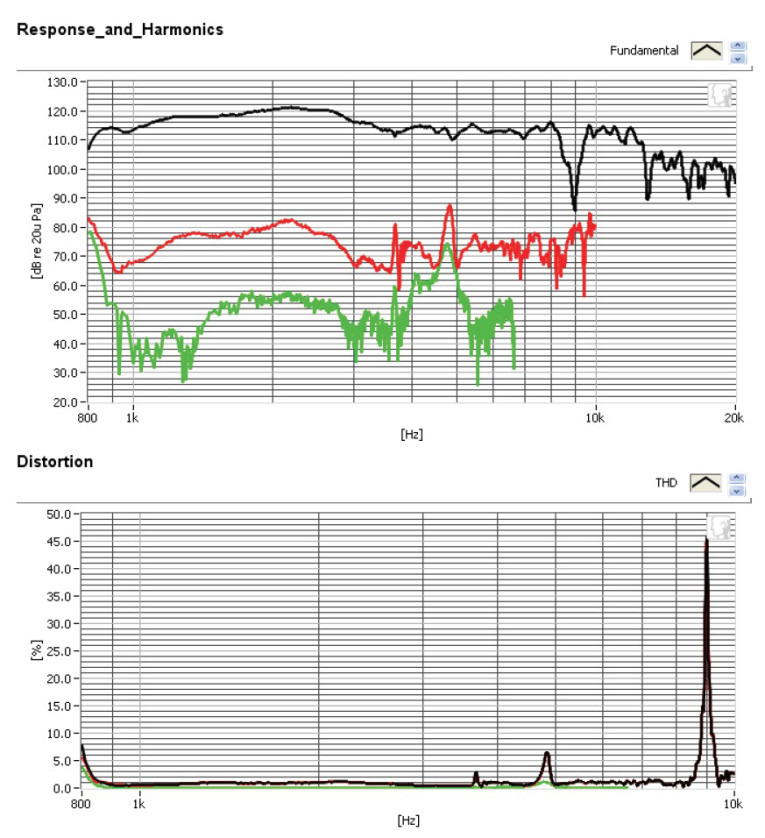
The Audiomatica CLIO Pocket analyzer generated the 180° polar plot (with 10° increments) shown in Figure 5. The last SPL measurement is depicted in Figure 6 and shows the two-sample SPL comparison of the D4400Ti-Nd/WGP22-50, indicating both samples to be as reasonably well matched in the relevant operating range, with some minor variances.
For the remaining group of tests, I employed the Listen, Inc. AmpConnect ISC analyzer and 0.25” SCM microphone, using SoundCheck 14 software to measure distortion and generate time-frequency plots. For the distortion measurement, I mounted the D4400Ti-Nd/WGP22-50 combination in free air without a baffle and used a pink noise stimulus to set the SPL to 104 dB at 1 m (1.03 V). Then, I measured the distortion with the Listen, Inc. microphone placed 10 cm from the mouth of the horn. This produced the distortion curves shown in Figure 7.
I then used SoundCheck to get a 2.83 V/1 m impulse response for this driver and imported the data into Listen’s SoundMap Time/Frequency software (now integrated with SoundCheck V12 and up). Figure 8 shows the resulting cumulative spectral decay (CSD) waterfall plot. Figure 9 shows the Short Time Fourier Transform (STFT) plot.


The build quality of all of the PRV Audio drivers I have used has always been quite good, and the D4400Ti-ND is no exception. Most of the engineering and management staff at PRV Audio came from the Selenium factory, after Selenium was sold to Harman, so the staff at PRV has many years of experience producing pro sound transducers, and as you can see from the data, it shows. VC
For more information, visit www.prvaudio.com
This article was originally published in Voice Coil, May 2017




